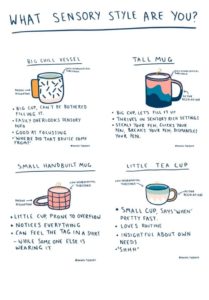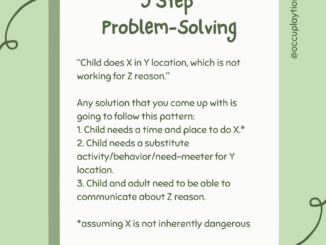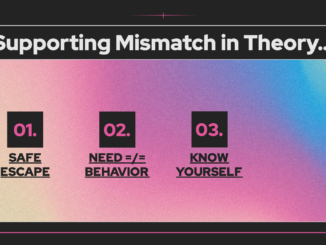This is SUCH a cute way of framing the four sensory profiles — in technical terms, and in order from left to right, top to bottom, they would be “low regulation”, “sensory seeking”, “sensory sensitive”, and “sensory avoidant”. But who doesn’t prefer to visualize those things as adorable mugs??
Everybody falls into one of these categories. People who are far out enough on the spectrum of one of the categories that it causes dysfunction in their everyday life are considered to have sensory processing difficulties/disorder.
“Big chill vessel” (aka low registration) means that you have a high threshold for sensory stimuli, and you’re passive about it — you don’t do much to seek it out or run away from it. It just happens and it doesn’t bother you much.
“Tall mug” (aka sensory seeking) means that you have a high threshold for sensory input, and you’re active about it. You want the mug “filled” and you’ll seek it out!
“Small handbuilt mug” (aka sensory sensitive) means that you have a low threshold for sensory input, and you’re passive about it. You’re noticing everything and it might sometimes be overwhelming — or it doesn’t take much to be overwhelmed.
“Little tea cup” (aka sensory avoidant) means that you have a low threshold for sensory input, and you’re active about seeking out the comfort level. You likely know exactly what is too much, and you’re likely to retreat away from it.

Credit to @doing.therapy for the art!



